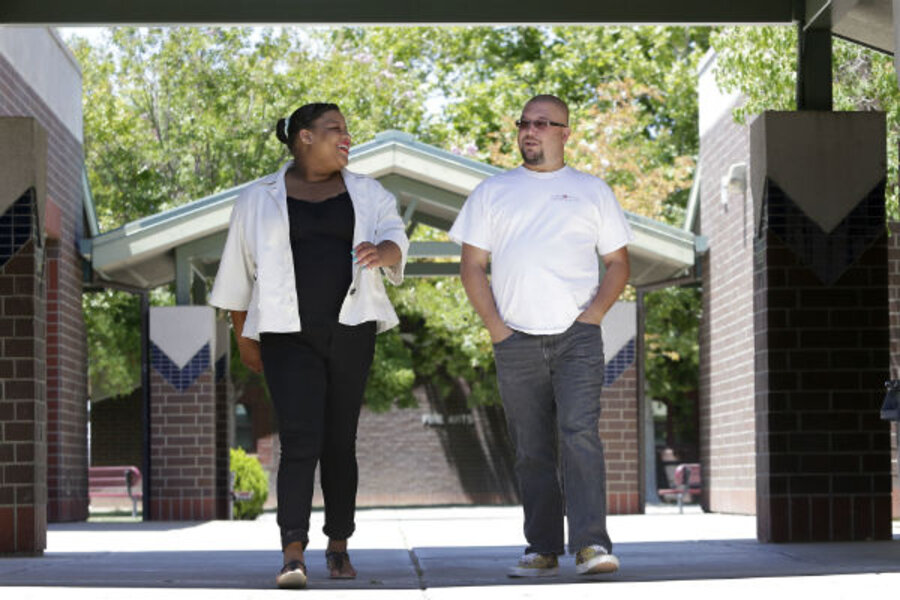California schools focus on foster care youth
Loading...
California is embarking on a first-of-its-kind attempt to improve the academic lives of foster youth by giving schools more money to meet their special learning and emotional needs and holding educators and administrators accountable.
But first, officials have to figure out how many school-age foster children they have and where they are enrolled in a state that's home to nearly one-fifth of the nation's foster children.
Until now, no state has attempted to identify every foster child in its public schools or to systematically track their progress, much less funnel funds toward those students or require school districts to show they are spending the money effectively.
That changed in California this month as part of a new school funding formula that will direct billions of extra dollars to districts based on how many students they have with low family incomes, learning to speak English or in foster care.
The state's 1,043 school systems had to submit plans by July 1 for how they intend to use the funds, a pot projected to reach at least $9.3 billion by 2021, to increase or improve services for those specific student groups.
During the next school year, districts also will have to report on their foster children's absences, progress toward graduation, standardized test scores and other measures they already maintain for the other two target groups.
The moves are significant for an estimated 42,000 school-age foster children, less than 1 percent of the state's 6.2 million public school students, said Molly Dunn, a lawyer with the Alliance for Children's Rights, a Los Angeles-based advocacy group.
It means educators and elected officials have recognized the group is facing unique educational hardships from abuse or neglect, frequent moves and experiences in foster or group homes, Ms. Dunn said.
"It's a whole new world," she said. "They are a very small group of students, they are lagging so far behind and for them to be included with these much larger populations of students focused the attention on the great level of need they have. And that's only right because these are our kids, the state's kids, and they are doing the worst."
A report last year by the nonprofit research agency WestEd found California's foster youth had the lowest math scores of any group, and had results in English comparable to those with disabilities or English learners.
Students in foster care also dropped out of high school at significantly higher rates than other at-risk students and were least likely to graduate. The authors noted that unlike racial minorities, English learners and impoverished students, the needs of foster youth had gone "unrecognized and unmet."
Come fall, school districts are to receive weekly updates on which students are in foster care, the result of a new data-sharing agreement between the state education and social service departments.
The change marks a fundamental shift from past practice, which held that schools should not get the information to avoid stigmatizing children or violating their privacy, said Jesse Hahnel, director of the Foster Youth Education Initiative at the National Center for Youth Law.
"If they don't know who their kids are, they can't design a program for them. It's not like there is a big group of parents advocating on their behalf," Mr. Hahnel said.
Los Angeles Unified School District, the nation's second-largest, educates more than 5,000 foster children. For next year, it has earmarked $9.9 million to hire 92 guidance counselors, behavior specialists, attendance monitors and service coordinators to help those students, a job that previously fell to just three foster youth liaisons.
"We really scaled it up significantly so we could provide direct support to every foster youth, which is what we wanted to do but didn't have the resources to do," Erika Torres, the district's pupil services director, said.
The 10 school districts in Santa Cruz County, with about 450 foster children, have proposed tutoring, counseling, extra-curricular activities and other help for foster youth in the region south of San Jose.
County Superintendent Michael Watkins said such efforts are a result of the state "holding everyone's feet to the fire" by grading schools on support for foster children.
"We won't know for a couple years, probably, but I'm hopeful this will stem the tide for youth who, through no fault of their own, end up in a system that totally fails them," Watkins said.
Michael Jones, a resource teacher in the Elk Grove Unified School District near Sacramento, has doubts.
"You can't fund decency. You can't fund caring. And unfortunately, that's a big problem with the system right now is the mindset is we will throw money at it and we will make things better," Jones said. "There is not enough money on the planet to put people in kids' lives who actually care and are there because they think it's the right thing to do."
Six years ago, he founded a weekly class where students in foster care could meet each other, talk about their struggles, get a hug and pick up school supplies, toiletries, and even prom attire that he bought or were donated. He has since expanded it to the district's other high schools.
Former student Kandance Stagner, 18, who has been in seven foster care settings since the second grade, graduated from high school in June and is preparing to attend college in Nebraska - achievements she attributes in large part to the nurturing environment Jones created.
She hopes foster youth who come after her will get the sort of tutoring and other help she received.
"I understand what they've gone through and I've been through what they've gone through and I chose to take a bigger and broader step," Ms. Stagner said. "I just know, I hope, that we will stop being the outcasts and the statistics."





